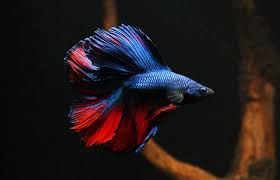Double Tail Betta Male
Double Tail Betta Male Care
Tank Size:
-
Minimum 10 liters (2.5 gallons), but 20 liters (5 gallons) or more is ideal.
-
Larger tanks with gentle filtration help maintain water quality and allow for better fin health.
Water Parameters:
-
Temperature: 25–28°C
-
pH: 6.5–7.5
-
Hardness: 3–10 dGH
Filtration & Flow:
-
Gentle filtration is best; strong currents can damage delicate fins.
-
Regular water changes (25–30% weekly) are crucial since bettas are sensitive to dirty water.
Substrate & Décor:
-
Sand or smooth gravel substrate.
-
Add driftwood, caves, and live plants (like Anubias, Java Fern, or Floating Plants) to mimic their natural environment and reduce stress.
-
Ensure no sharp decorations—long fins can easily tear.
Diet:
-
Carnivorous diet.
-
High-quality betta pellets as a staple, supplemented with frozen/live foods (brine shrimp, bloodworms, daphnia).
-
Feed small portions 1–2 times a day to prevent bloating.
Temperament & Tankmates:
-
Males are territorial and must be housed alone or with very peaceful, non-fin-nipping tankmates.
-
Good tankmates in larger tanks: small snails, shrimp (with caution), or calm bottom dwellers like corydoras.
-
Avoid other male bettas and fin-nipping species like barbs or guppies.
Special Considerations for Double Tail Bettas
-
Double Tail Bettas have two caudal lobes instead of one, giving them a spectacular appearance.
-
Their tails are heavier, making them less agile and more prone to fin damage and swim bladder issues.
-
They benefit from tanks with lower water levels and plenty of resting places (broad leaves, betta hammocks).
✨ Interesting Fact:
The Double Tail trait was originally developed through selective breeding in the 20th century. While stunning, the gene that causes the double tail also shortens the body slightly—this contributes to their unique look but also makes them more delicate compared to other betta types.

